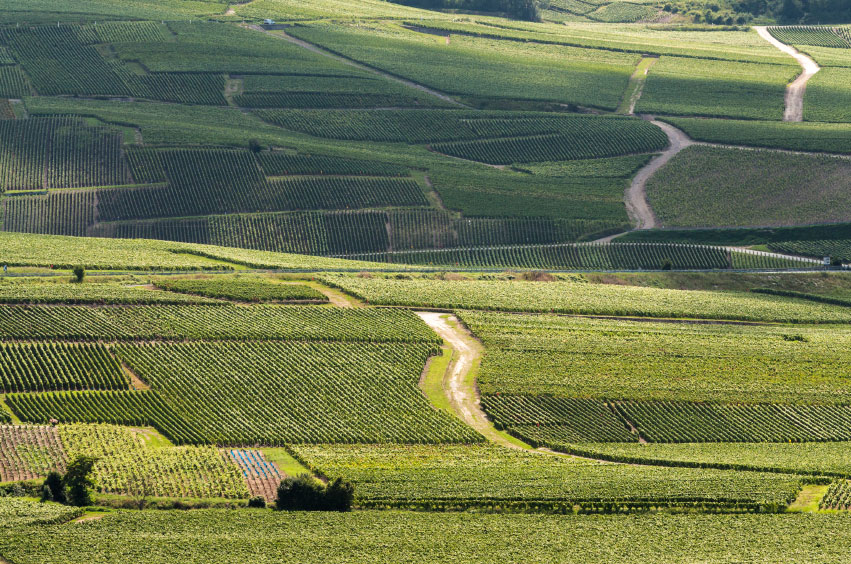シャンパン
Despite popular misconception, Champagne is not synonymous with any sparkling wine. Champagne is France's most northerly wine region, due east of Paris. Its eponymous product is widely regarded as the greatest sparkling wine. For a sparkling wine to be labeled “Champagne" it must be produced from within the region's borders.
There are 4 main subregions of Champagne: Montagne de Reims, Marne Valley, Côte des Blancs and Côte des Bar. The Marne River dissects the Champagne region in two. Its surrounding vineyards in the Marne Valley, or the Vallée de la Marne, have proven best suited for Pinot Meunier. To the southeast, the Côte des Blancs is Champagne's premier area for Chardonnay. Its south and east facing slopes mimic the greatest vineyards in Burgundy, Chardonnay's ancestral home. Chardonnay is also found on the Côte de Sézanne. Due north of the Côte des Blancs, Champagne's best Pinot Noir is cultivated on the Montagne de Reims. Pinot Noir is also grown in the outlying Aube region, or Côte des Bars.

Perhaps Champagne's greatest asset is its chalk soils, which provide incredible drainage, forcing the vine to “stress" as it searches for a supply of water. This stress helps preserve acidity in the grapes. Champagne's vineyards sit atop an ancient seabed and a vast array of cephalopod fossils can be found. Historically, the chalk soils have also proven a beneficial natural element for other reasons – Roman soldiers dug an elaborate system of caves that now lie beneath many Champagne houses in Reims. These caves, or crayères, maintain a cool temperature year round, ideal for Champagne production and storage. During World War I, as the city of Reims was bombed above, the Champenois lived in these same caves as their bottles, transforming the crayères into schools and hospitals.
Champagne remains one of the most highly regulated wine regions in France. The Comité Champagne dictates each year when harvest can begin. Harvest in Champagne is strictly by hand; mechanical harvesting of grapes is illegal. The vast majority of Champagne is a blend of multiple vintages. In fact, each Champagne house is regulated to set aside a portion of wine each year to enter their “reserve" system. These “reserve" wines act as an insurance policy, to ensure that a great product is released year after year.
Want to find some great Champagnes? Be sure to check out the top Champagnes as rated by Vivino users.
Show more
表示中 1-24 の 237 ワイン























